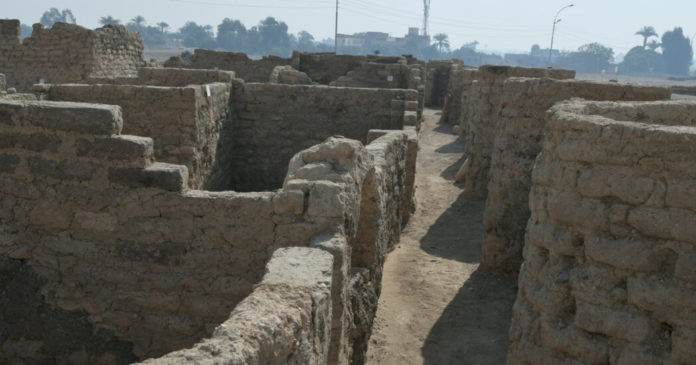CAIRO — Archaeologists said on Thursday they had uncovered a large ancient pharaonic city that had lain unseen for centuries near some of Egypt’s best known monuments.
The city was built more than 3,400 years ago during the opulent reign of Amenhotep III, one of Egypt’s most powerful pharaohs, according to the Egyptian archaeologist overseeing the excavations, Zahi Hawass.
The team began searching for a mortuary temple near Luxor in September, but within weeks found mud brick formations in every direction, Mr. Hawass said in a statement.
They unearthed the well-preserved city that had almost complete walls and rooms filled with tools of daily life along with rings, scarabs, colored pottery vessels and mud bricks bearing seals of Amenhotep’s cartouche.
“The city’s streets are flanked by houses and some of their walls are up to three meters high,” Mr. Hawass said.
The excavations lie on the west bank of Luxor near the Colossi of Memnon, Medinet Habu and the Ramesseum, or mortuary temple of King Ramses II, not far from the Valley of the Kings.
“This is a very important discovery,” said Peter Lacovara, director of the U.S.-based Ancient Egyptian Heritage and Archaeology Fund.
The state of preservation and the volume of items from everyday life brought to mind another famous excavation, he added.
“It is a sort of ancient Egyptian Pompeii and shows the critical need to preserve this area as an archaeological park,” said Mr. Lacovara, who has worked at the Malqata palace area for more than 20 years but was not involved in the excavations.
The site contains a large number of ovens and kilns for making glass and faience, along with the debris of thousands of statues, said Betsy Bryan, a specialist of Amenhotep III’s reign.
“Just to locate the manufacturing centers opens up the detail of how the Egyptians under a great and wealthy ruler such as Amenhotep III did what they did. This will furnish knowledge for many years to come,” she added.
Source : Nytimes










_1-218x150.jpg)



